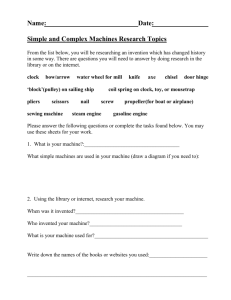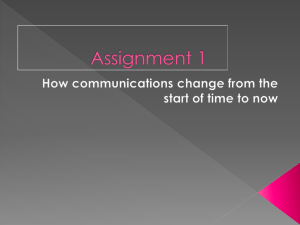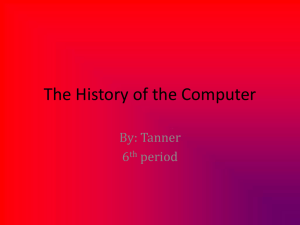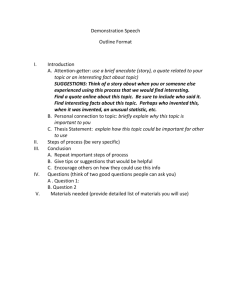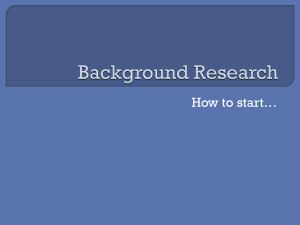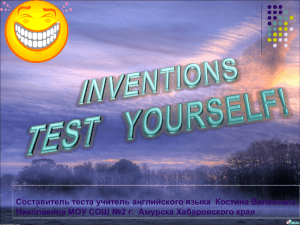Interactive Timeline
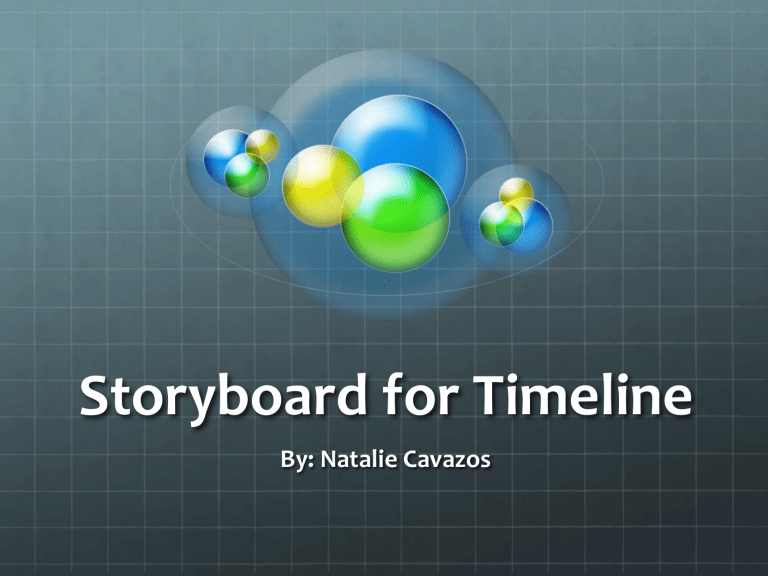
Storyboard for Timeline
By: Natalie Cavazos
1453
Printing Press
The printing press came from
Europe by Gutenberg.
The idea came from the screw-type wine press of
Rhine Valley.
He is also accredited for printing the worlds first book. The 42 lined (per page)
Gutenberg Bible.
1564
Graphite Discovered
Was named by Abraham
Gottlob Werner.
It is used in pencils, they called them lead pencils yet there is no lead in them.
It is considered the highest grade of coal, though it is not used as fuel because it is hard to ignite.
1654
Slide Rule
The inventor was an English mathematician William
Oughtred.
The Circular ruler was invented first and the straight slide ruler was later invented.
They were used until the first hand held calculator was invented.
1872
QWERTY Machine
Christopher Sholes creates a machine to print the alphabet.
He was a newspaper editor and printer in Milwaukee.
His first draft was two rows of the letters alphabetically placed.
1895
First Radio Signal
Guglielmo Marconi sent the first radio signal in Italy.
In 1899 he sent one across the English Channel.
Two years later the letter ‘S’ was sent from England to
New Foundland. This was the first successful
Transatlantic
Radiotelegraph message.
1916
Democracy and Education
John Dewey
An American philosopher and educational reformer.
Was a major voice of progressive education
Wrote Democracy and
Education
1926
Lev Vygotsky
Focus was on developmental psychology
Proposed a theory of the development of higher cognitive functions for children
1934
Jean Piaget
A Swiss developmental
Psychologist, focused primarily on children’s education
Placed great importance on the Education of Children
Director of the
International Bureau of
Education
1936
Keyboard Simplified
Dr. August Dvorak and brother-in-law Dr. William
Dealey
They have been called a variation of names, the
Simplified keyboard, or the
American Simplified keyboard.
Dvorak proponents claim this layout uses less finger movement, increases typing rate, and reduces errors.
1953
B.F Skinner
A Harvard Professor of
Psychology
Invented the Skinner Box,
Also known as the operant conditioning chamber
Invented the teaching machine
1960
Robert Gagne
An educational Psychologist
Known for his Conditions of
Learning
Gagne was involved in applying concepts of instructional theory to the design of computer based training and multi-media based learning
1962
Plato computing system
Developed at the University of Illinois at Urbana
Champaign.
One of the primary developers was Donald
Bitzer.
The rights to Plato are now owned by Plato Learning.
1966
Education Center
Digital library of education research and information.
Sponsored by the U.S.
Department of Education
The collection included
Journal articles, books, research synthesis, and conference papers.
Technical reports, dissertations, policy papers, and other educationrelated materials.
1968
Atkinson and Shiffrin
Invented the memory model and the modal model
Modal model was presented in 1968
Richard Atkinson and
Richard Shiffrin
1973
Jerome Bruner
A psychologist who made contributions to human cognitive psychology and cognitive learning theory
Received a B.A from Duke
University and a Ph. D from
Harvard
Published the Process of
Education
1978
HyperStudio
It is a multi media authoring tool that allows people to communicate ideas on diskette, CD-ROM, or internet.
Was founded by a classroom teacher in 1978 and developed by Robert
Wagner Publishing.
A software that helps emphasize technology as a personal creative tool.
1981
Howard Gardner
A developmental
Psychologist
A professor of cognition and education at Harvard
He is best known for his theory of Multiple
Intelligences
Published Frames of Mind:
The theory of multiple intelligences in 1983
1989
World Wide Web
Tim Berners-Lee wrote a proposal of a data base and software project.
In 1990 he wrote a more formal proposal to build a hypertext project called
World Wide Web.
A NeXT computer was used by Berners-Lee as the worlds first web server. As well as write the first Web
Browser WorldWideWeb.
1994
NJStar Communicator
A popular traditional
Chinese Microsoft Windows add on.
It supported Chinese,
Japanese, and Korean input.
Microsoft later provided language support in updates for their internet explorer.
1995
WebQuest Page
Provide teachers with programs to keep students on task while online.
Introduces units, concludes unit, and provides a cumulative activitiy at the end of the unit.
For classrooms all over the world.
2001
MIT Courseware
Puts all information from undergraduate and graduate courses online.
Partly free and available to anyone, anywhere.
As of November 2011 they had 2080 courses online.
2005
Interactive Textbooks
The laptop computer mixes with the students notebook and textbook.
Books are published in Dual
Format, which includes a
CD-ROM in the back.
2010
Electronic Textbooks
First wide spread use of electronic textbooks.
The internet is accessed and entirely through wireless, hand held, and pocket computers.
Email is replaced by video letter system.
2013
Smithsonian Center
Helps the museum community in acquiring and strengthening its understandings in museology.
it helps serve the educational and informational needs of the field.
